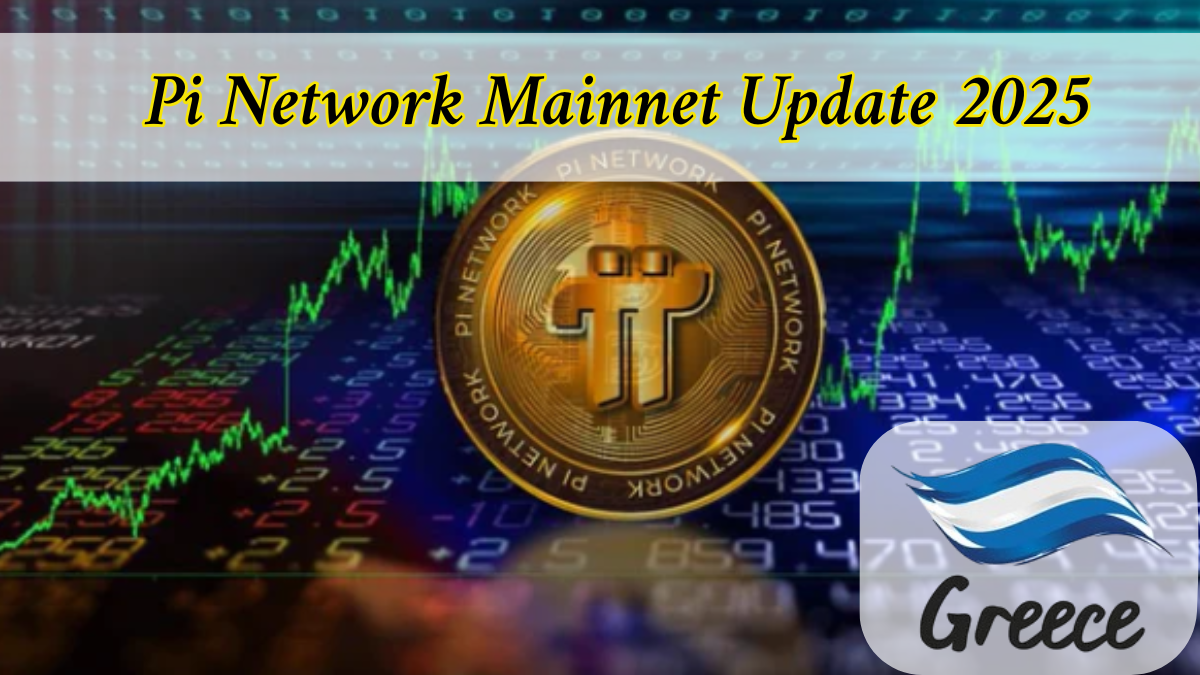The Pi Network, known for revolutionizing crypto mining through mobile devices, is moving toward a historic milestone: the Mainnet Launch in 2025. Since its inception, Pi Network has aimed to decentralize the crypto space by allowing users to mine currency without high computational requirements. As we approach the anticipated launch, millions of users are eager to understand the latest developments, eligibility criteria, and post-launch opportunities.

Summary Table: Pi Network Mainnet Launch 2025
| Category | Details |
|---|---|
| Project Name | Pi Network |
| Current Phase | Enclosed Mainnet |
| Expected Mainnet Launch | 2025 (Exact date TBD) |
| Key Requirements | Mass KYC Completion, Wallet Migration, Ecosystem Readiness |
| Key Benefits Post-Launch | Trading, dApps Integration, Exchange Listings, Real-World Transactions |
| Official Website | minepi.com |
Background: What is the Pi Network?
Pi Network was introduced with a bold goal—to make mining accessible to everyone using smartphones instead of high-energy, hardware-heavy methods. Built on a secure and scalable blockchain, the network has grown to include millions of users globally. The project follows a phased rollout, with the Enclosed Mainnet launched in December 2021 to prepare for full decentralization.
Key objectives of the enclosed phase include:
- Conducting large-scale KYC verification
- Strengthening the blockchain infrastructure
- Supporting dApp development within the Pi ecosystem
Pi Network Mainnet Launch 2025: Major Developments
The transition from the enclosed to the open mainnet in 2025 is more than symbolic—it marks the true decentralization and economic activation of the network.
Notable features of the launch include:
- KYC & Wallet Migration: Only verified users will be able to migrate their mined Pi to the mainnet wallet.
- Exchange Integration: Pi coins will become tradable on external exchanges.
- Ecosystem Growth: More dApps will launch, allowing users to spend Pi coins in real use cases.
- Security Enhancements: Ongoing improvements to secure transactions and protect user data.
Current Status: Where Things Stand
As of 2025, Pi Network is still in the enclosed mainnet phase. The team has focused efforts on onboarding developers, enhancing the ecosystem, and clearing the KYC backlog.
Key Areas of Focus:
- Completing mass user KYC
- Migrating wallets to mainnet
- Finalizing partnerships for exchange listings
- Auditing infrastructure scalability
The Pi Core Team is careful not to rush the launch, insisting that security and readiness must be ensured first.
Projected Timeline: When Will the Open Mainnet Go Live?
While no fixed date has been officially confirmed, all signs point toward a 2025 rollout. The timing will depend on:
- The percentage of users completing KYC
- Technical readiness of the mainnet infrastructure
- Exchange partnerships and liquidity planning
The cautious approach is seen as a way to protect user assets and maintain the integrity of the network upon release.
What to Expect After the Mainnet Launch
The open mainnet will significantly change how users interact with the Pi ecosystem.
Post-Launch Benefits:
- Trading on Exchanges: Pi will be listed on major crypto exchanges, allowing for trading and liquidity.
- Ecosystem Participation: Users will be able to use Pi for payments, dApps, games, and other decentralized services.
- Price Discovery: Real-world demand will begin to determine the Pi coin’s value.
- International Expansion: Increased interest may drive partnerships across industries and borders.
KYC Verification: A Cornerstone of the Ecosystem
KYC (Know Your Customer) is critical for:
- Preventing fraudulent accounts and bots
- Ensuring fair distribution of Pi coins
- Creating trust in the network for future partnerships and exchange listings
Users who haven’t completed KYC will not be able to migrate their coins or participate in the open mainnet until verified.
Preparing for Wallet Migration
Pi users should:
- Ensure their app is updated
- Complete KYC as soon as possible
- Back up their wallet and recovery phrase securely
Mainnet wallet access will allow users to:
- Send and receive Pi coins
- Participate in economic activities within the ecosystem
- Trade Pi through verified channels
Pi Coin Exchange Listings: What’s Next?
After mainnet, Pi coin is expected to debut on top crypto exchanges. The team is reportedly in talks with several major platforms. This will:
- Establish market value
- Attract institutional interest
- Open up liquidity for early adopters
Listing may start with smaller regional platforms before global exchanges onboard the coin.
Future of Pi Network: Beyond the Launch
Following the open mainnet, Pi Network plans to:
- Support a decentralized app marketplace
- Enable smart contract deployment
- Introduce staking and governance features
- Expand real-world utility through partnerships
The project’s long-term vision includes creating a fully decentralized financial ecosystem driven by mobile participation.
Official Sources & Resources
To stay up to date, users are encouraged to follow:
- Official Site: https://www.minepi.com
- Pi Network App: Available on iOS and Android
- Pi Developers Portal: For updates on dApps and integration
FAQs About Pi Network Mainnet Launch 2025
1. What is the Pi Network Mainnet Launch 2025?
Ans. It is the transition to an open blockchain network where users can freely trade and use Pi coins.
2. When is the official launch date?
Ans. No official date is confirmed, but the launch is expected sometime in 2025, pending ecosystem readiness.
3. What do users need to do before the launch?
Ans. Complete KYC, back up wallets, and stay updated through the official Pi app.
4. Will Pi be available on exchanges?
Ans. Yes, the coin is expected to be listed on several crypto exchanges after the open mainnet goes live.
5. What are the benefits of the mainnet launch?
Ans. Trading, price discovery, dApp access, and a more mature, decentralized ecosystem.
For More Information Click Here